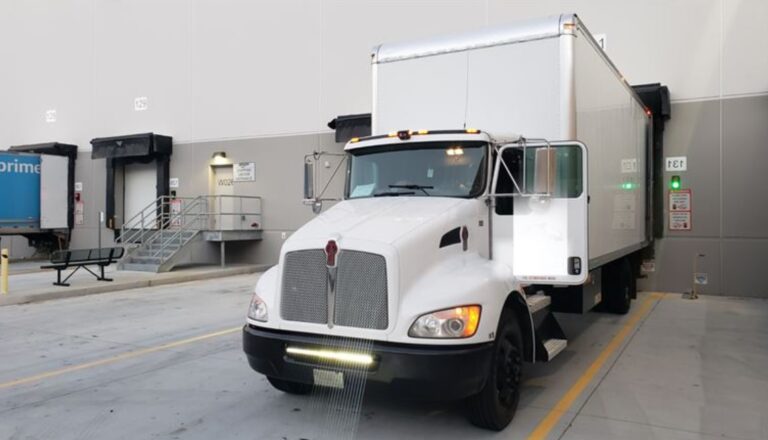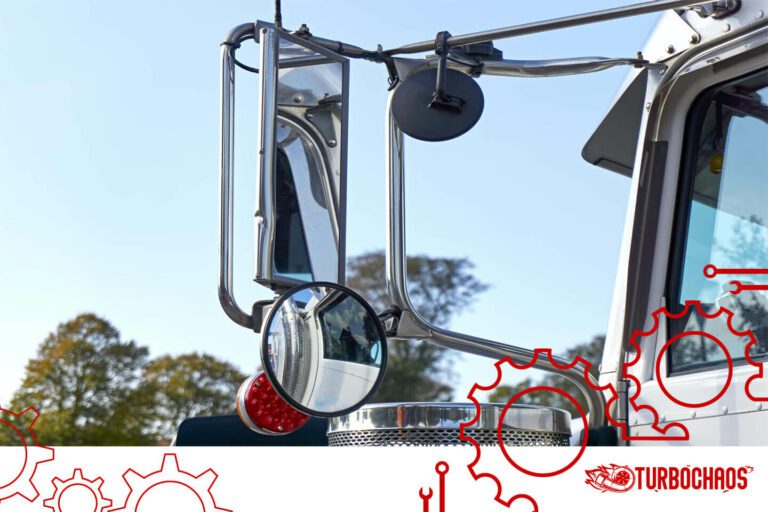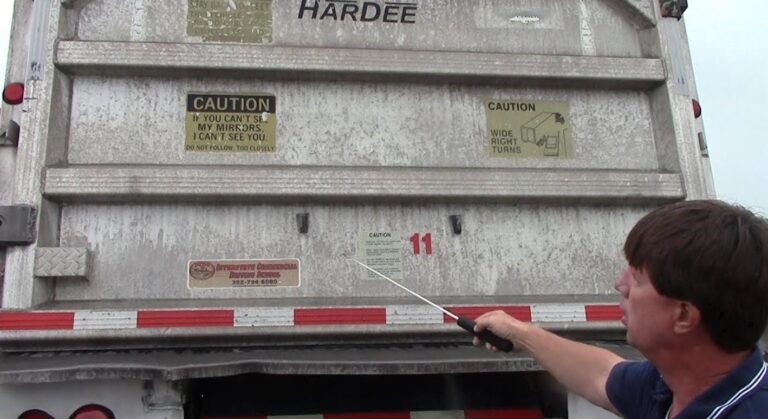How Much Does A Fire Truck Weigh? Quick Answer
Are you looking for How Much Does A Fire Truck Weigh? This is a question that often comes to mind when you see these massive vehicles speeding down the road. With an average length of 40 feet, fire trucks are among the most dominant vehicles on the street. In this article, we will delve into the specifics of fire truck weight, compare it with other vehicles, and explore what it’s like to drive one.
Key Takeaways
- Average Weight: Fire trucks weigh between 19 to 30 tons, which is approximately 38,000 to 60,000 pounds.
- Empty Weight: Even when empty, a fire truck still weighs around 11,500 to 14,500 pounds.
- Comparison: Fire trucks are heavier than most other vehicles, including cars, standard trucks, and ambulances.
- Equipment: The weight includes water, ladders, and special rescue equipment.
- Weigh Stations: Fire trucks are generally exempt from stopping at weigh stations.
- Driving Experience: Driving a fire truck requires specialized training due to its weight and size.
- Variations: Different types of fire trucks have different weights.
How Much Does A Fire Truck Weigh?
Fire trucks weigh between 19 to 30 tons, which is approximately 38,000 to 60,000 pounds. Even when empty, a fire truck still weighs around 11,500 to 14,500 pounds. These figures are according to the Pennsylvania Department of Transportation or PennDOT.
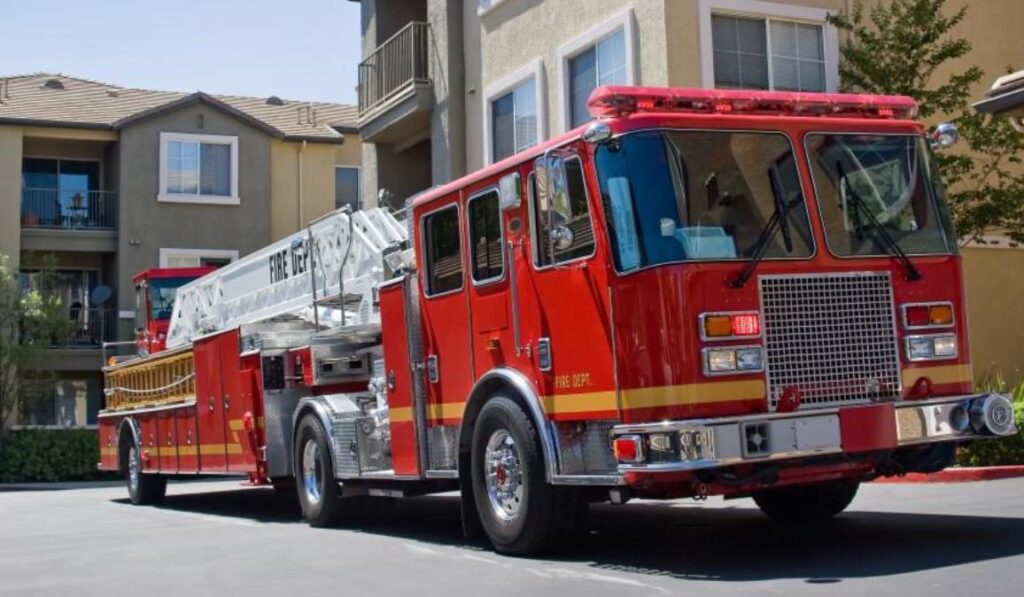
Why Are Fire Trucks So Heavy?
Fire trucks are heavy because they carry a lot of water, usually at least 500 gallons. They also have cargo space for an elevating ladder, special rescue equipment, other ladders, and hoses.
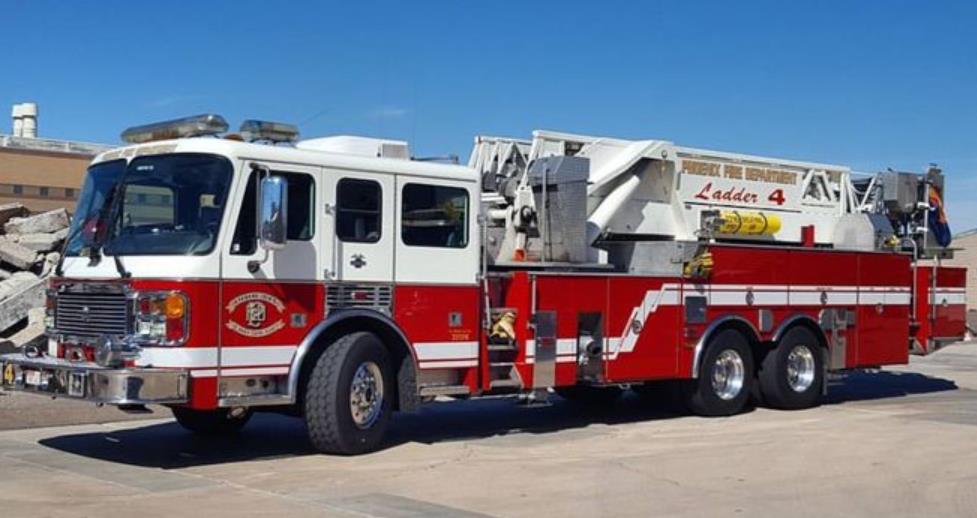
Vehicles That Fire Trucks Outweigh
Cars
A standard car weighs approximately 1.5 tons or 3,000 pounds. Fire trucks are 10 to 20 times heavier.
Standard Trucks
The average weight of a standard truck is 3 tons or 6,000 pounds, making a fire truck 10 times heavier.
Ambulances
An average ambulance weighs 5 tons or 10,000 pounds, making it much lighter than a fire truck.
Vehicles That Outweigh Fire Trucks
Garbage Trucks
A loaded garbage truck weighs 25 tons or 50,000 pounds, making it comparable to some fire trucks.
Plow Trucks
Loaded plow trucks weigh 28 tons or 56,000 pounds, almost as heavy as some fire trucks.
Cement Trucks
A full cement truck weighs 33 tons or 66,000 pounds, heavier than even the heaviest fire trucks.
How Much Does an Empty Fire Truck Weigh?
An empty fire truck weighs between 11,500 to 14,500 pounds according to the Office of Energy Efficiency & Renewable Energy.

Comparison with Other Empty Vehicles
- Cars: 2,400 to 5,000 pounds
- Pickup trucks, minivans, or SUVs: 3,200 to 4,500 pounds
- Standard pick-up trucks or large SUVs: 4,500 to 6,000 pounds
Do Fire Trucks Have to Stop at Weigh Stations?
Fire trucks are generally exempt from stopping at weigh stations, even though they easily exceed the 10,000-pound limit for commercial vehicles.
What Is It Like Driving a Heavy Fire Truck?
Driving a fire truck requires specialized training. The vehicle’s large size and weight make it challenging to maneuver, especially at high speeds.

Different Types of Fire Trucks and Their Weights
Pumpers
Pumpers are the most common type of fire truck and weigh around 40,000 pounds when fully loaded.
Ladder Trucks
Ladder trucks can weigh up to 70,000 pounds, especially when equipped with additional tools and ladders.
Tankers
Tanker trucks are designed to carry large volumes of water and can weigh up to 60,000 pounds.
Legal Weight Restrictions for Fire Trucks
Fire trucks must adhere to legal weight limits, which can vary by state. Exceeding these limits can result in fines and may compromise the safety of the vehicle.
How Does Fuel Weight Affect the Fire Truck?
The weight of the fuel can add an additional 1,000 to 1,500 pounds to the fire truck. This is crucial information for firefighters to know, especially when calculating the total weight.
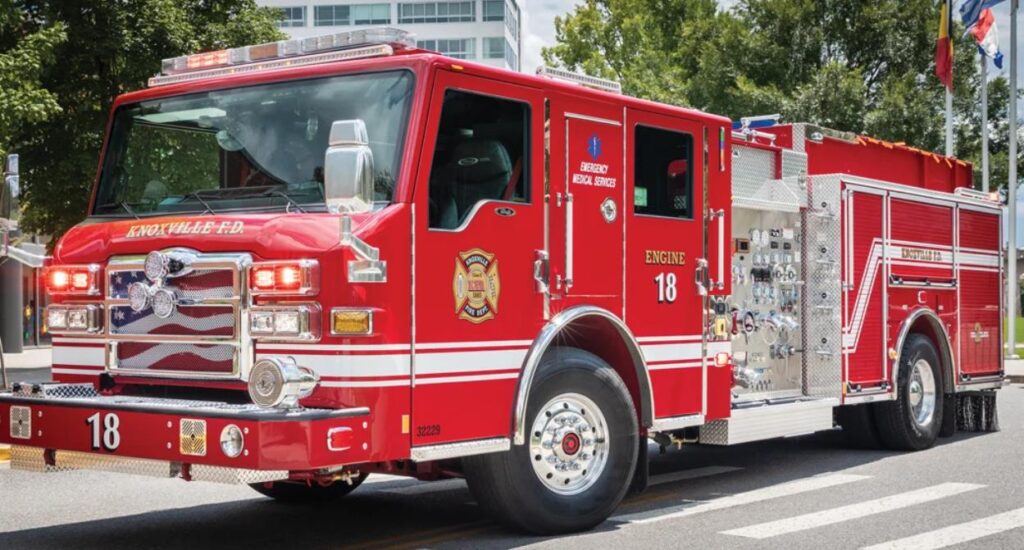
Importance of Tire Pressure in Heavy Fire Trucks
Maintaining the correct tire pressure is vital for the safe operation of a fire truck. Incorrect tire pressure can affect the truck’s maneuverability and may lead to accidents.
Maintenance Checks for Weight Distribution
Regular maintenance checks ensure that the weight is distributed correctly across the fire truck. This is crucial for the vehicle’s performance and safety.
How Much Does a Fire Truck Weigh When Full of Water?
According to the Pennsylvania Department of Transportation or PennDOT, the average fire truck weighs 19 to 30 tons. When converted into pounds, that’s 38,000 to 60,000 pounds. This weight includes the water that the fire truck carries, which can be at least 500 gallons.
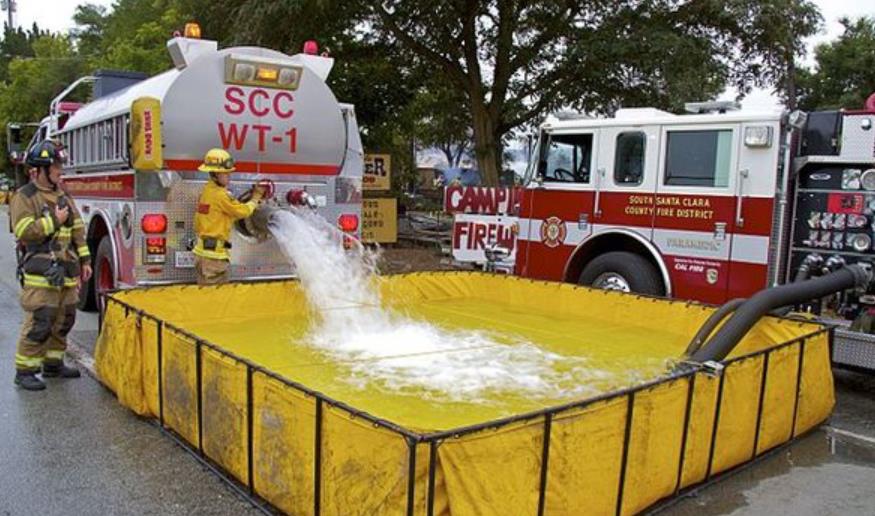
The weight also accounts for other equipment like ladders, hoses, and special rescue tools. When full of water, a fire truck can weigh up to 60,000 pounds, making it one of the heaviest vehicles on the road.
How Long is a Fire Truck?
The average length of a fire truck is around 40 feet. Some smaller fire trucks can be around 35 feet long. The length is crucial for accommodating the various equipment and personnel needed for firefighting operations.
It’s also a factor that makes maneuvering a fire truck quite challenging, especially on narrow streets or during sharp turns.
How Wide is a Fire Truck?
The average width of a fire truck is about 10 feet. Some smaller fire trucks can be around 9 feet wide. The width is essential for stability, especially when the truck is moving at high speeds or navigating through tight spaces. It also provides enough room for the storage of essential firefighting equipment.
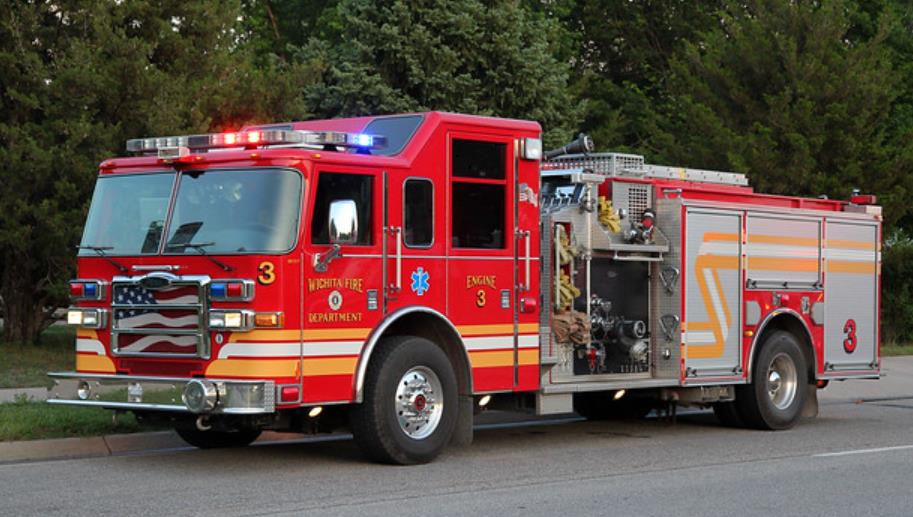
What Types of Fire Trucks Are There?
Fire trucks come in various types, each designed for specific roles in firefighting and rescue operations. The most common types include:
- Pumper Trucks: These are the most standard fire trucks, equipped with a water pump and hoses.
- Ladder Trucks: These trucks have long, extendable ladders for reaching high places.
- Rescue Trucks: Equipped with specialized tools for rescuing people trapped in cars or buildings.
- Tanker Trucks: These carry large amounts of water to the scene, especially useful in areas without hydrants.
- Brush Trucks: Designed for fighting wildfires, these are smaller and more agile.
Each type of fire truck has its unique set of equipment and capabilities, making them indispensable in different emergency situations.
What Equipment is on a Fire Truck?
Fire trucks are equipped with a variety of tools and equipment to assist firefighters in their duties. Some of the essential equipment includes:
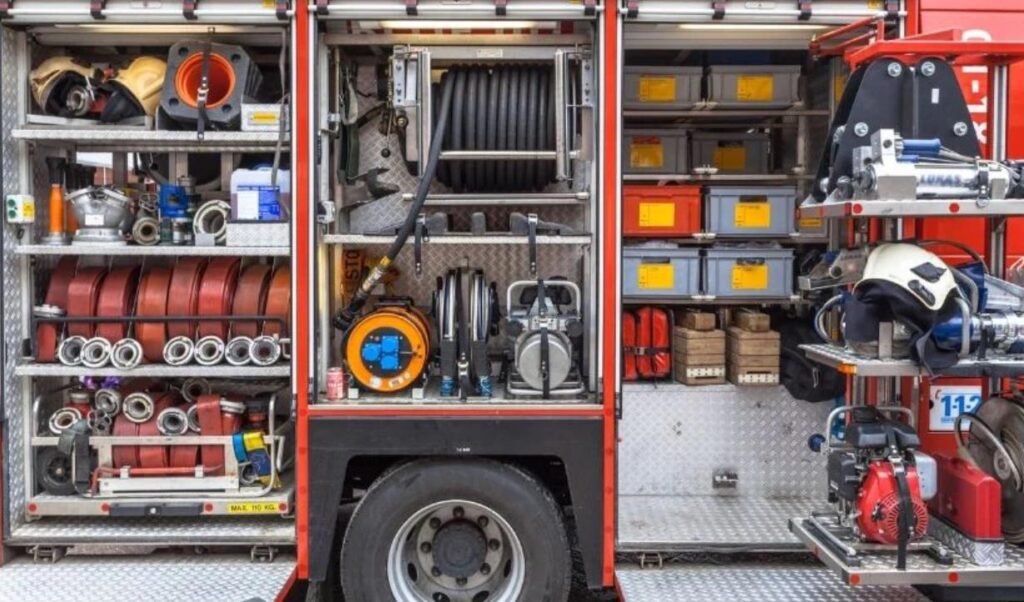
- Axes: For breaking through barriers.
- Halligan Bars: A multipurpose tool used for prying, twisting, punching, or striking.
- Fire Extinguishers: For immediate fire suppression.
- Ventilator Fans: To remove smoke and fumes.
- Nozzles: Different types for various firefighting needs.
- Cutters: For cutting through metal or other materials.
- Deck Gun: Mounted atop the fire truck, capable of spraying up to 1,000 gallons of water per minute.
- Preconnects: Hoses that are preconnected to save time.
- Pump Panel: Controls the pressure and flow of all hoses.
- Flashlights, Radio Systems, Thermal Imaging Cameras: For communication and navigation.
How Long is a Fire Truck Hose?
The length of a fire truck hose can vary, but they are generally around 50 to 100 feet long. Some specialized hoses can even reach up to 200 feet. The length is crucial for firefighters to reach the fire from a safe distance.
How Much Water Does a Fire Truck Hose Deliver?
A fire truck hose can deliver water at different rates, but a standard hose can release about 360 gallons per minute.
Some specialized hoses, like the master stream hose, can release up to 1,000 gallons per minute. This is essential for combating larger fires effectively.
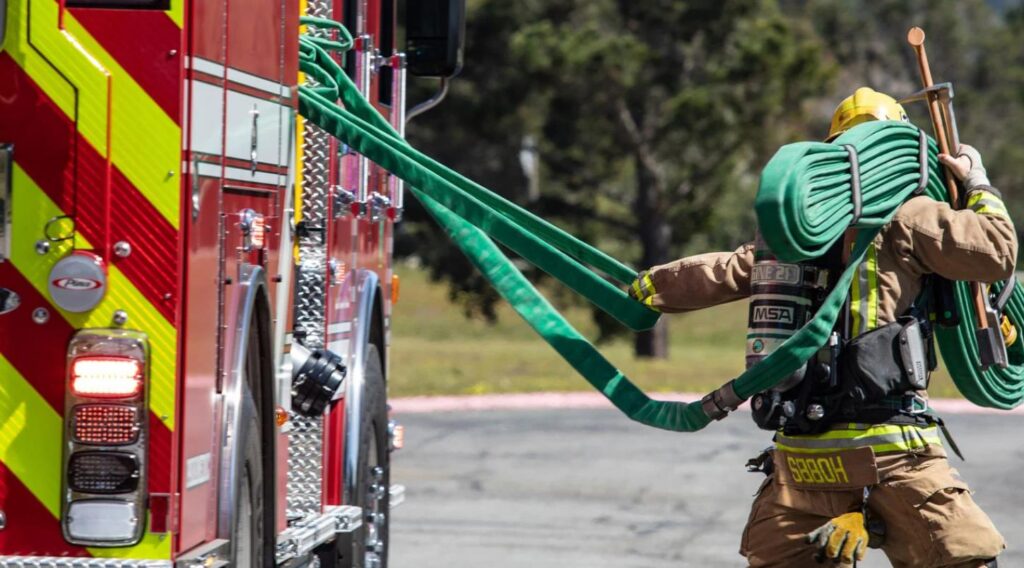
What Licence Do You Need to Drive a Fire Truck?
To drive a fire truck, one needs a Commercial Driver’s License (CDL) with a special endorsement for emergency vehicles.
This requires passing both a written test and a driving skills test. In some jurisdictions, additional certifications or specialized training may also be required.
Conclusion
In summary, understanding the different types of fire trucks and their respective weights is essential for both operational efficiency and safety. From legal restrictions to the added weight of fuel, various factors contribute to a fire truck’s total weight.
Regular maintenance and attention to details like tire pressure can make a significant difference in how these heavy vehicles perform on the road.
Top FAQ’s
How Do Fire Trucks Compare to Other Vehicles in Weight?
Fire trucks are significantly heavier than most other vehicles on the road. For instance, they are 20 times heavier than a standard car and 10 times heavier than an average truck. Even when compared to other emergency vehicles like ambulances, fire trucks are considerably heavier.
What Happens If a Fire Truck Exceeds Weight Limits?
If a fire truck exceeds the legal weight limits, it may not be allowed back on the road until the load is reduced. Overweight vehicles are not safe for the driver or other motorists and often break state laws.
How Do Fire Truck Drivers Handle the Weight?
Driving a fire truck requires specialized training to handle its weight and size. Maneuvering such a heavy vehicle requires planning, especially when making turns, to avoid accidents.
How Do Fire Trucks Maintain Speed Despite Their Weight?
Fire trucks are engineered to reach destinations quickly despite their weight. Building and maintaining speed is a skill that fire truck drivers, often referred to as engineers or apparatus operators, must master.

Welcome to the exhilarating world of Matt Rex, a professional car racer turned renowned vehicle enthusiast. Immerse yourself in his captivating blog as he shares heart-pounding adventures, expert reviews, and valuable insights on cars, trucks, jets, and more. Fuel your passion for speed and discover the beauty of vehicles through Matt’s engaging stories and meticulous expertise. Join the ever-growing community of enthusiasts who find inspiration and expert advice in Matt Rex’s blog—a digital hub where the thrill of speed meets the pursuit of knowledge.



